How many teaspoons are in a tablespoon? This common culinary question often arises in the kitchen, where precise measurements play a vital role in achieving delicious and well-balanced dishes.
Whether you’re a seasoned chef or an enthusiastic home cook, understanding the conversion between teaspoons and tablespoons is essential knowledge for accurately following recipes, scaling ingredients, and achieving consistent results.
In this article, we will delve into the world of culinary measurements, exploring the relationship between teaspoons and tablespoons, practical examples, conversion tips, and the importance of being familiar with this fundamental conversion. So let’s uncover the answer to the age-old question: how many teaspoons are there in a tablespoon?
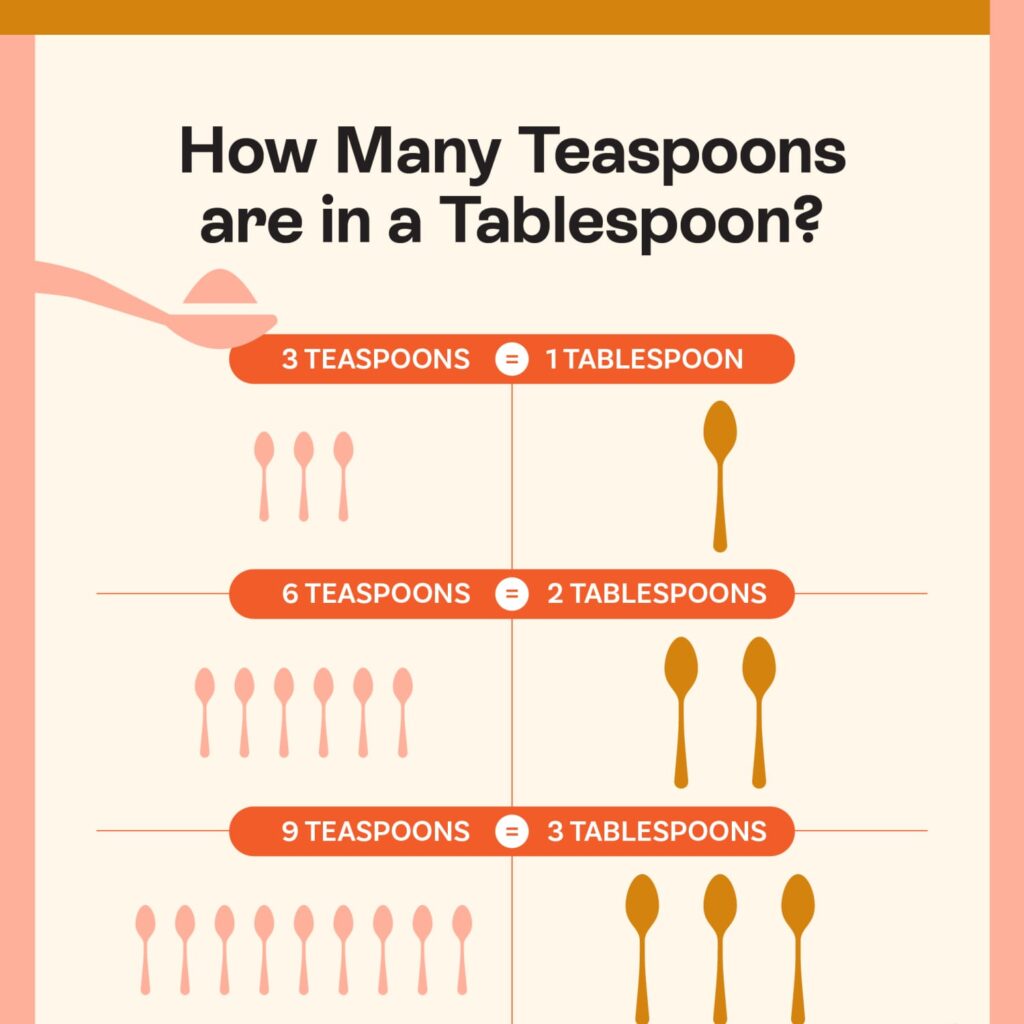
SEE ALSO: How Many Cups in a Pint (Easy Conversion Charts)
What is Teaspoon?
A teaspoon is a unit of volume commonly used in cooking and culinary measurements. It is abbreviated as “tsp” or “t.” In the United States, a teaspoon is equal to 1/6 fluid ounce or approximately 4.93 millilitres.
However, like tablespoons, teaspoon measurements can vary slightly in different countries. In the United Kingdom, for example, a teaspoon is generally accepted as 5.92 millilitres.
Teaspoons are smaller than tablespoons and are typically used for measuring smaller quantities of ingredients such as spices, extracts, or condiments. They are also commonly used for stirring beverages like tea or coffee. It’s important to note that precise measurements may vary depending on the specific recipe and regional conventions.
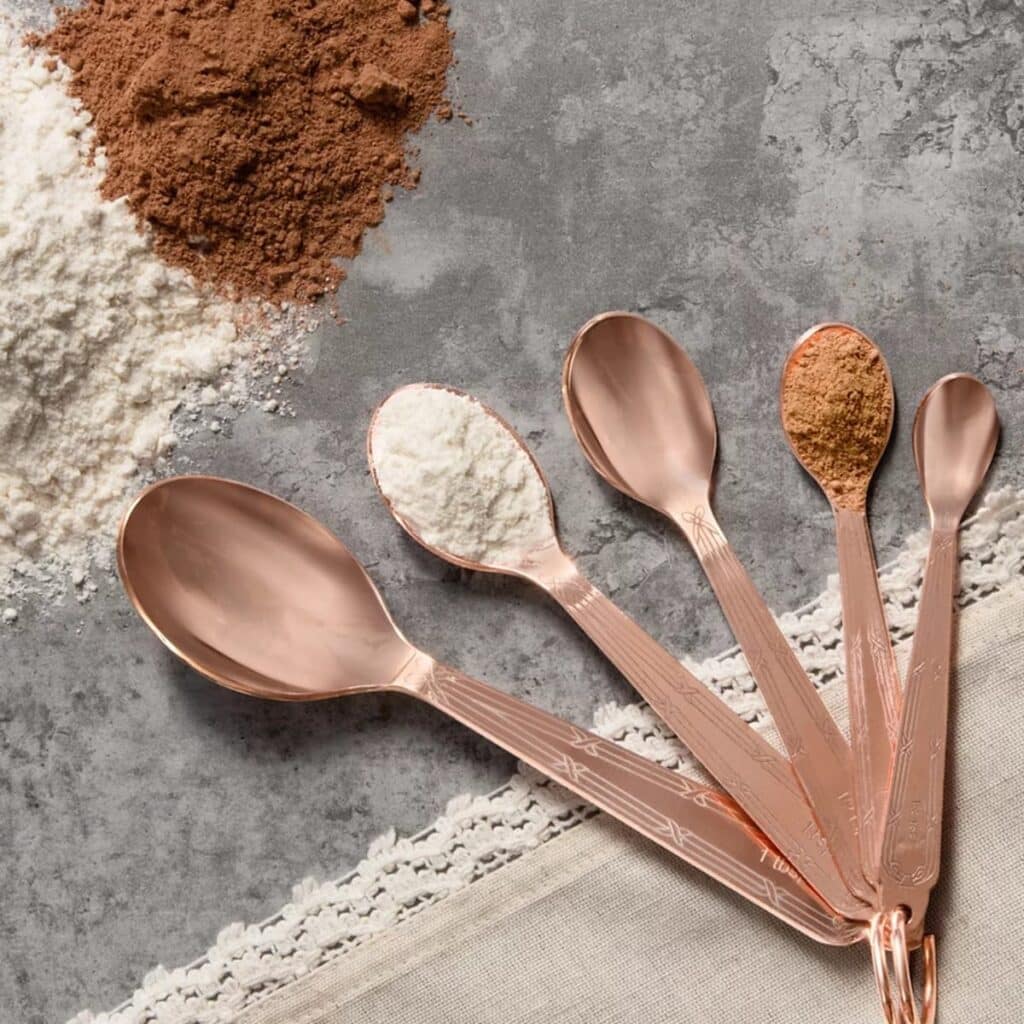
What is Tablespoon?
A teaspoon is a unit of volume commonly used in cooking and culinary measurements. It is abbreviated as “tsp” or “t.” In the United States, a teaspoon is equal to 1/6 fluid ounce or approximately 4.93 millilitres.
However, like tablespoons, teaspoon measurements can vary slightly in different countries. In the United Kingdom, for example, a teaspoon is generally accepted as 5.92 millilitres.
Teaspoons are smaller than tablespoons and are typically used for measuring smaller quantities of ingredients such as spices, extracts, or condiments. They are also commonly used for stirring beverages like tea or coffee. It’s important to note that precise measurements may vary depending on the specific recipe and regional conventions.
SEE: How many Quarts in a Gallon (Food Measurements)
How many Teaspoons are in a Tablespoon
There are 3 teaspoons in one tablespoon.
Every cook should memorize this basic kitchen measurement conversion. It will come in handy when cooking and adjusting your recipes.
However, it is important to note that in the metric system, a teaspoon is 5ml and a tablespoon is 20ml. Therefore, there would be 4 teaspoons in a tablespoon.
Here’s a quick teaspoon-to-tablespoon conversion chart you can use as a reference:
| Tablespoon (tbsp) | Teaspoon (tsp) |
| 4 tbsp | 12 tsp |
| 3 tbsp | 9 tsp |
| 2 tbsp | 6 tsp |
| 1 tbsp | 3 tsp |
| 1/2 tbsp | 1 1/2 tsp |
The pattern here is simply multiplying the number of tablespoons you’ll need by 3 to get the equivalent number of teaspoons. So if a recipe calls for 3 tbsp of butter, for example, you could substitute that with 9 tsp of butter (because 3 * 3 = 9).
If, on the other hand, you need to convert tsp to tbsp, you would do the opposite and divide the number of tsp by 3. Instead of 6 tsp of cinnamon, for instance, you could use 2 tbsp (because 6 ÷ 3 = 2).
So how many tsp in a tbsp? 3. This also means that 1 tsp = 1/3 tbsp.
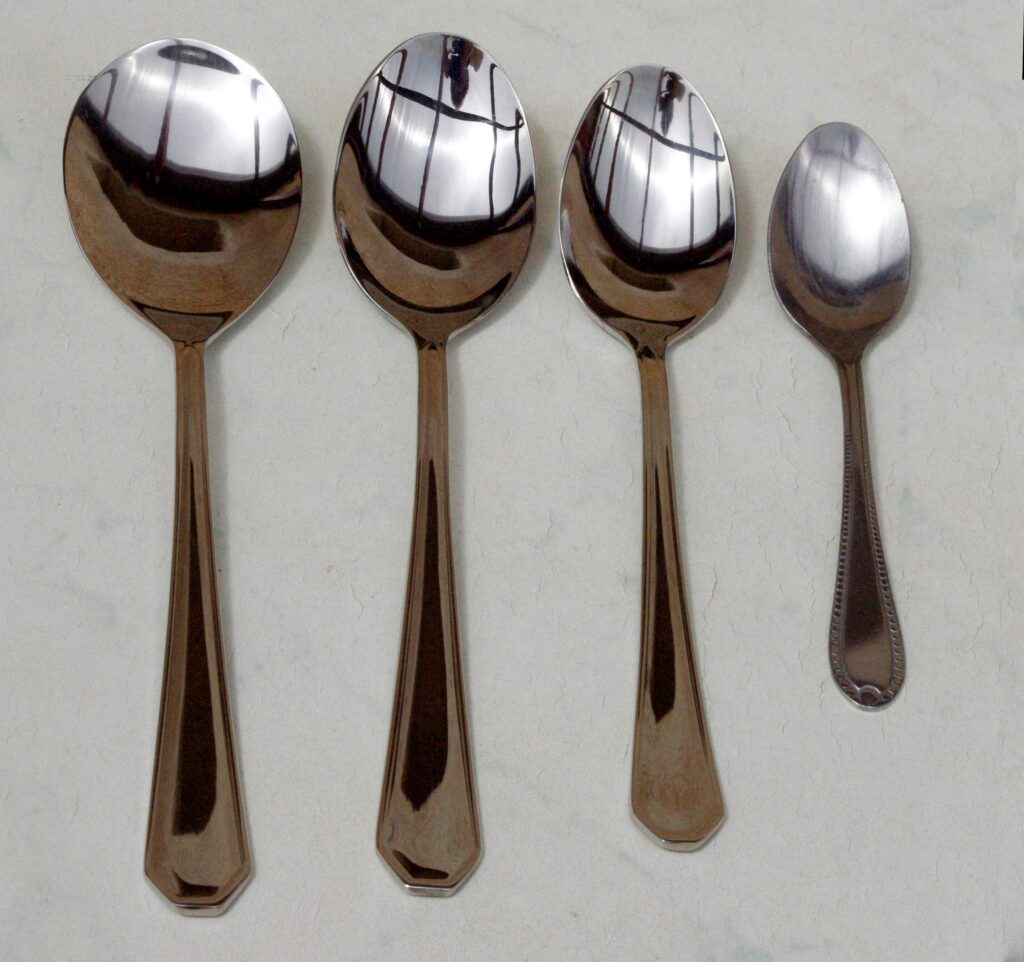
Why is it Important to be Familiar with Teaspoon to a Tablespoon
Being familiar with Teaspoon-to Tablespoon conversion is important for several reasons. Firstly, it allows for accurate and consistent measurements in cooking and baking. Many recipes provide ingredient quantities in tablespoons or teaspoons, and understanding the conversion between the two ensures that the right amount of each ingredient is used.
Accurate measurements are crucial in achieving the desired taste and texture of a dish. Using too little or too much of an ingredient can significantly impact the final result.
Imagine a recipe calling for 2 tablespoons of a specific spice, but mistakenly using 2 teaspoons instead. The dish may lack the intended flavour, potentially resulting in disappointment.
Furthermore, understanding teaspoon-to-tablespoon conversion enables flexibility when adjusting recipe sizes. If a recipe is designed for a larger or smaller serving size, knowing the conversion allows for scaling the ingredients accordingly. This ensures consistent results regardless of the desired quantity.
Having a grasp of teaspoon-to-tablespoon conversion also aids in troubleshooting and improvising in the kitchen. In cases where a specific measuring spoon is not available, being able to mentally convert between teaspoons and tablespoons allows for adaptability.
It empowers cooks to estimate and adjust ingredient quantities, ensuring the dish is still prepared with relative accuracy.
Additionally, familiarity with teaspoon-to-tablespoon conversion facilitates the efficient use of recipes from different regions.
As measurement conventions can vary across countries, being able to convert between teaspoons and tablespoons enables the utilization of a wider range of culinary resources. It enables the exploration and adaptation of recipes from diverse culinary traditions.
SEE: How Many Pints in a Quart? (Liquid Measurement)
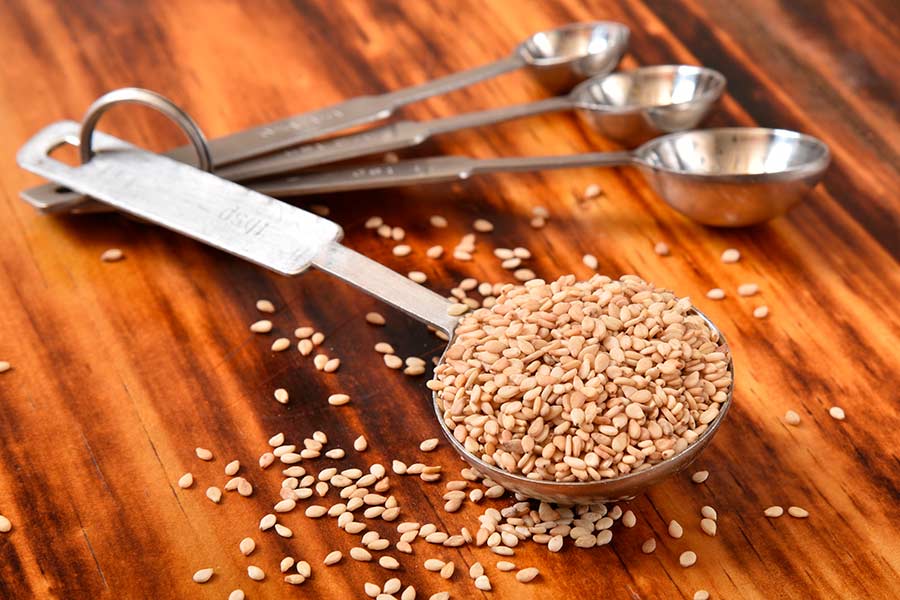
What is a Pinch Measure?
A pinch is a term used to describe a very small and imprecise amount of an ingredient. It is a measurement that is typically used when a recipe requires a tiny quantity of a seasoning or spice, such as salt, pepper, or certain herbs.
The exact measurement of a pinch can vary depending on personal preference and the context of the recipe. Generally, a pinch is the amount of an ingredient that can be held between the thumb and forefinger, using a gentle squeezing motion.
It is typically smaller than 1/8th of a teaspoon, but larger than a mere few grains. Since a pinch is not a precise measurement, it is often used to add a subtle hint of flavour or to adjust the taste of a dish to individual preferences. It allows for a small, controlled addition of an ingredient without overpowering the overall balance of flavours.
READ ALSO: “How Many ML in a Cup? Your Essential Guide to Accurate Measurements
What is a Dash Measure?
Dashing is more often used today in the cocktail world, as a measurement for bitters, which is why bitters bottles are better designed to release the desired “dashed” amount without measuring. (An Old Fashioned, for example, might call for three dashes of bitters, which can be released from the bottle using three quick flicks of the wrist.)
If you do want to measure a dash, you could fill a standard ¼ teaspoon halfway. You could also seek out measuring sets that include ⅛ or 1/16 teaspoon measurements, or an adjustable measuring teaspoon with these sizes, but these are generally speciality products.
Other common colloquial cooking terms include a “splash,” or about ⅛ of an ounce (mostly used for liquids); a “tad,” or ¼ teaspoon; or a “smidgen,” about 1/32 teaspoon.
CHECK THIS: How Many Ounces in a Cup (Food Measurements)
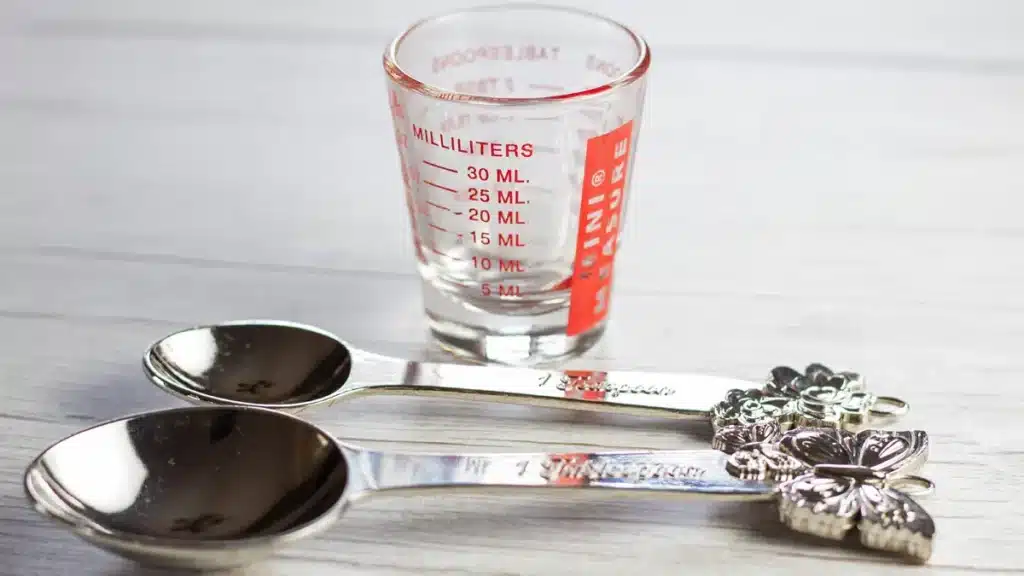
Imperial Dry Measurement Conversion Chart
Many recipes that call for dry ingredients, such as flour, sugar, baking powder, or specific spices, will require you to use not only teaspoons and tablespoons but also cups, which are even bigger than tablespoons.
But what if you don’t have any cups? Or do you need to cut a recipe in half and end up with strange measurements you don’t have to measure cups for, such as 1/6 cup or 3/8 cup?
This is why it’s helpful to know what the conversions are between tsp, tbsp, and cups. You already know there are 3 tsp in a tbsp, so what about cups? There are 16 tbsp in 1 cup; this means that there are 48 tsp in 1 cup.
The following chart shows all the major imperial dry measurement conversions you should know:
| Cup (c) | Tablespoon (tbsp) | Teaspoon (tsp) |
| 1 c | 16 tbsp | 48 tsp |
| 3/4 c | 12 tbsp | 36 tsp |
| 2/3 c | 10 tbsp + 2 tsp | 32 tsp |
| 1/2 c | 8 tbsp | 24 tsp |
| 3/8 c | 6 tbsp | 18 tsp |
| 1/3 c | 5 tbsp + 1 tsp | 16 tsp |
| 1/4 c | 4 tbsp | 12 tsp |
| 1/6 c | 2 tbsp + 2 tsp | 8 tsp |
| 1/8 c | 2 tbsp | 6 tsp |
| 1/16 c | 1 tbsp | 3 tsp |
Tips for Remembering Dry Ingredients Conversion Measurement
1: For Tablespoons to Teaspoons, Multiply by 3
As we discussed above, 1 tbsp = 3 tsp. By this logic, 1 tsp = 1/3 tbsp.
If you need to convert tbsp to tsp, all you need to do is multiply the number of tbsp needed by 3. Likewise, if you’re doing a teaspoon-to-tablespoon conversion, you would need to simply divide the number of tsp by 3 to get its equivalent in tbsp.
2. For Cups to Tablespoons, Multiply by 16
Anytime you need to convert cups to tablespoons (or even to teaspoons), just recall that there are 16 tablespoons in 1 cup. Thus, to find out how many tbsp you need, simply multiply the number of cups a recipe calls for by 16.
For example, say a recipe calls for 1 3/4 cups of sugar but you only have a tablespoon on hand. All you’d need to do is multiply 1 3/4 by 16 to get its equivalent in tbsp:
1 3/4 = 7/4
7/4 * 16/1 = 112/4
= 28 tbsp
If you ever want to check your math, just use the chart above as a reference. In this case, you’d add together the number of tablespoons listed for both “1 cup” and “3/4 cup.” This gets you the same answer: 28 tbsp.
READ ALSO: How Many Cups in a Pound
Conclusion
Understanding the conversion from teaspoons to tablespoons is an invaluable skill for anyone venturing into the realm of cooking and baking. With this knowledge, you can confidently navigate recipes, ensuring accurate measurements and consistent outcomes.
The ability to convert between teaspoons and tablespoons empowers you to adjust serving sizes, troubleshoot in the absence of precise measuring tools, and explore recipes from different culinary traditions.
By appreciating the significance of teaspoon-to-tablespoon conversion, you can elevate your culinary prowess and take control of your kitchen creations. Remember, precision in measurements often translates to precision in flavours and textures.
So, whether you’re seasoning a dish with a pinch, measuring out the perfect amount of spice, or scaling a recipe to feed a crowd, understanding teaspoons and tablespoons will serve as your reliable guide.
As you continue to hone your cooking skills, keep practising and familiarize yourself with common conversions. Reference charts, mnemonic devices, and hands-on experience will aid in cementing this knowledge in your culinary repertoire.
Embrace the art and science of cooking by embracing the importance of precise measurements, including the conversion between teaspoons and tablespoons.
So, the next time you find yourself wondering how many teaspoons are in a tablespoon, you can confidently answer, knowing that you possess the knowledge to bring delectable recipes to life.
